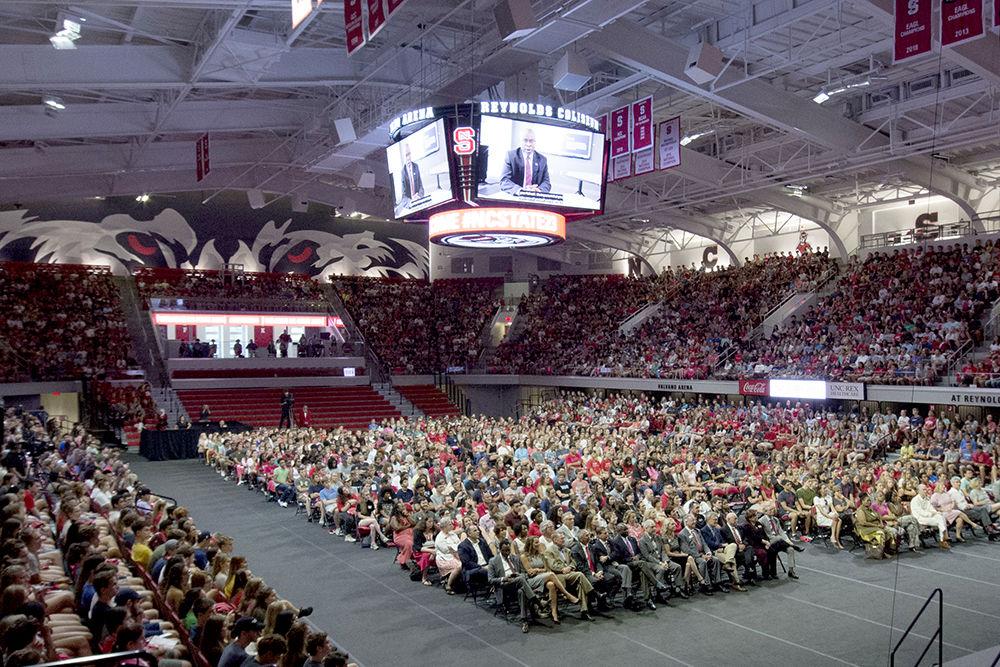According to Senior Vice Provost Louis Hunt, for the first time in NC State’s history, the newly admitted class of freshmen is more than 50% female. Programs like Women and Minority Engineering Programs and Women in Science and Engineering believe this milestone is promising for their work in minimizing the gender gap in traditionally male-dominated colleges.
Hunt said four colleges currently have more men than women: the College of Engineering, College of Natural Resources, Poole College of Management and University College.
“Our goal is to have a very diverse campus,” Hunt said. “We’re interested in geographic diversity, we’re interested in socioeconomic diversity, ethnic, gender, discipline, just all sorts of things that really make for a better campus environment, a better educational environment.”
Katherine Titus-Becker, director of WISE, said the message of inclusivity begins at the recruitment level.
“The trend in higher ed, for other schools, is that there’s more women than men,” Titus-Becker said. “At a school that is predominantly engineering … it is very surprising that over 50% are women … It’d be more telling to look at the breakdown of departments and in colleges.”
Laura Bottomley, director of Women in Engineering Programs and K-12 outreach, works to recruit, retain and graduate women and minorities in the College of Engineering.
“The university as a whole wants the same thing as the College of Engineering, and that is proportional representation of all groups,” Bottomley said. “There’s research in our own college of management to show that diverse teams always produce better results than uniform teams. One way to get diverse teams is to have diversity of gender and ethnicity.”
Hunt said that in 2005, the College of Engineering was 13% women compared to the university as a whole at 44%; since then, the percentage of women in the College of Engineering has steadily risen to 30% in 2018.
“There’s a bit of a trend across the United States that women are more interested in engineering,” Hunt said. “The field is more appealing to them, and they certainly excel at it. I think it’s a great thing … Across the country, [colleges] are really trying to diversify the STEM pipeline.”
Bottomley said the national percentage of undergraduate engineering degrees awarded to women has generally wavered around 18% since 2004.
Angelitha Daniel, director of Minority Engineering Programs, said the diversification effort at NC State starts before students even apply.
“We’re very mindful of when [we] bring students to campus,” Daniel said. “You want them to be able to see themselves as engineers and computer scientists. A lot of the activities that we do within those visits are for that purpose … We try to make sure that the projects are hands-on, things that are relatable.”
While recruiting is the first step in targeting a diverse group of applicants, both the Women and Minority Engineering Programs and WISE directors said an inclusive campus environment is just as important.
“We’re good at getting students here,” Daniel said. “Where things get a little fuzzy is that students go into their departments and have challenges, and they do not know where to go for support. One of the things that we have been doing is meeting with each department individually and just walking through practices that we know help.”
Daniel and Bottomley said faculty can provide resources in their syllabi, be mindful when assigning group work and even open up about their personal hobbies and interests to create a more welcoming environment for all students.
Although promising, all three said there is still lots of work to be done.
“We need to look at the numbers of specific majors and specific departments and then assess culture, because I think there are still some cultures here at NC State that are not very welcoming to female students,” Titus-Becker said. “And then conversely, are there cultures out there that are not welcoming to men? How can we do a better job of recruiting, getting more women faculty? And this includes underrepresented groups as well as students of color and faculty of color, which tend to be lacking across the board.”








